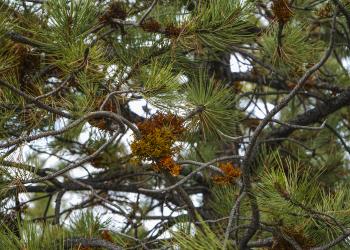Forest Health
Forest health has been defined by the production of forest conditions which directly satisfy human needs and by resilience, recurrence, persistence, and biophysical processes which lead to sustainable ecological conditions. Our definitions and understanding of forest health are also dependent on spatial scale.
The health of national forests and grasslands is paramount to our mission of caring for the land and serving people. The Forest Service works to maintain, enhance, and restore healthy forest conditions on the national forests and grasslands. We partner with landowners and conduct forest insect, disease, and invasive plant surveys, monitor trends in forest health and benefits, and provide technical and financial assistance to prevent, suppress and control outbreaks threatening forest resources. We also conduct cutting-edge research and develops tools to help land managers better understand and manage forest health.
Reforestation Strategy

The Forest Service released “Growing and Nurturing Resilient Forests: A Reforestation Strategy for the National Forest System” with the intent to then develop national and regional 10-year implementation plans focused on reforesting needs on the NFS. The strategy and plans will include the challenges, vision and steps the agency will take to successfully increase the pace and scale of reforestation, address existing needs, and anticipate future events. The work also will help the agency meet provisions of the Repairing Existing Public Land by Adding Necessary Trees Act, also called the REPLANT Act. That act provides the Forest Service with funding to address the backlog of needed reforestation on NFS acres.
Silviculture

Silviculture is the art and science of controlling the establishment, growth, composition, health, and quality of forests and woodlands to meet the diverse needs and values of landowners and society such as wildlife habitat, timber, water resources, restoration, and recreation on a sustainable basis. This is accomplished by applying different types of silvicultural treatments such as thinning, harvesting, planting, pruning, prescribed burning and site preparation. Intermediate treatments (thinning) are designed to enhance growth, quality, vigor, and composition of the stand after establishment or regeneration and prior to final harvest. Regeneration treatments (harvesting) are applied to mature stands in order to establish a new age class of trees. Regeneration methods are grouped into four categories: coppice, even-aged, two-aged, and uneven-aged.



